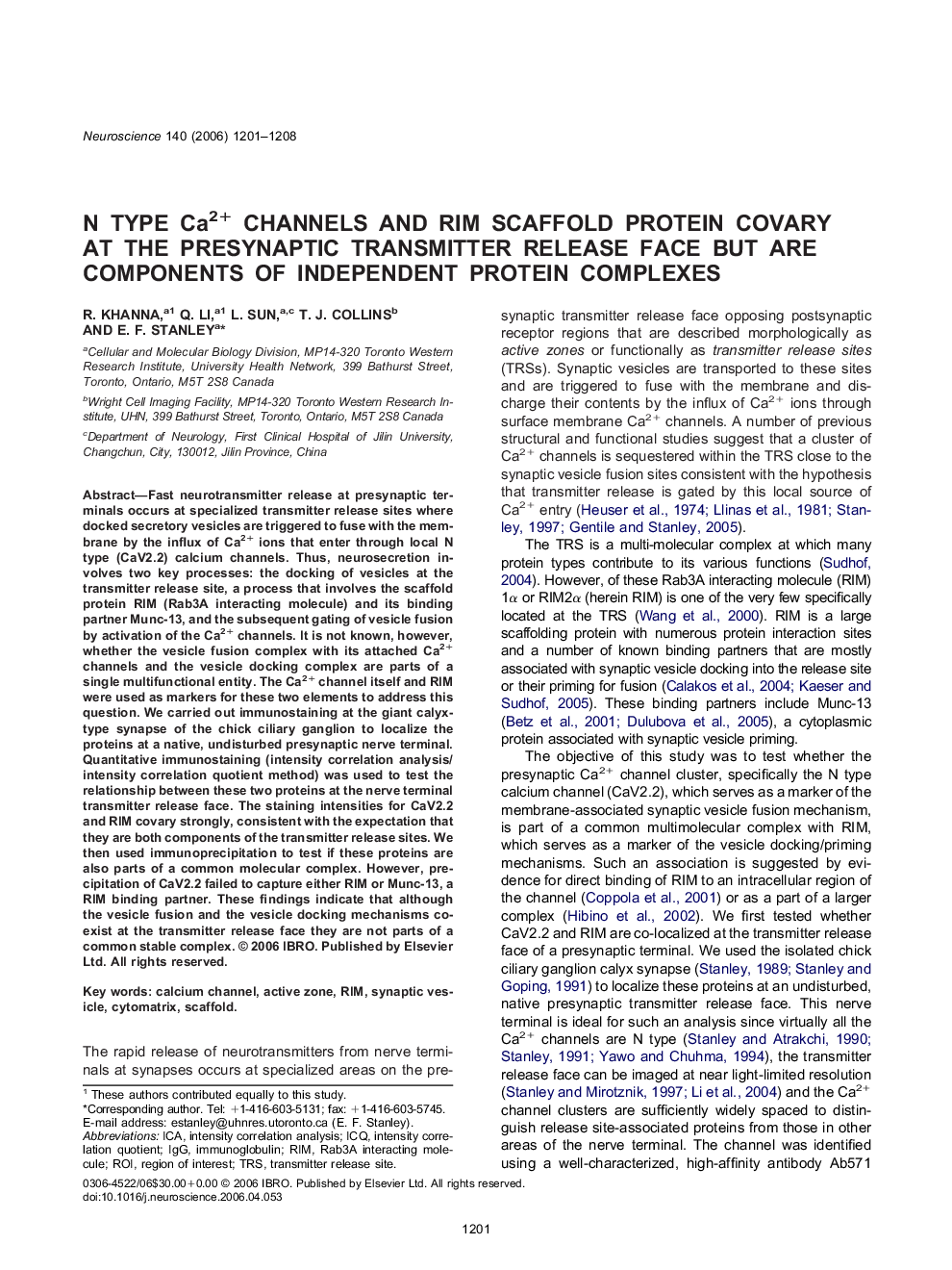| کد مقاله | کد نشریه | سال انتشار | مقاله انگلیسی | نسخه تمام متن |
|---|---|---|---|---|
| 4342601 | 1614908 | 2006 | 8 صفحه PDF | دانلود رایگان |

Fast neurotransmitter release at presynaptic terminals occurs at specialized transmitter release sites where docked secretory vesicles are triggered to fuse with the membrane by the influx of Ca2+ ions that enter through local N type (CaV2.2) calcium channels. Thus, neurosecretion involves two key processes: the docking of vesicles at the transmitter release site, a process that involves the scaffold protein RIM (Rab3A interacting molecule) and its binding partner Munc-13, and the subsequent gating of vesicle fusion by activation of the Ca2+ channels. It is not known, however, whether the vesicle fusion complex with its attached Ca2+ channels and the vesicle docking complex are parts of a single multifunctional entity. The Ca2+ channel itself and RIM were used as markers for these two elements to address this question. We carried out immunostaining at the giant calyx-type synapse of the chick ciliary ganglion to localize the proteins at a native, undisturbed presynaptic nerve terminal. Quantitative immunostaining (intensity correlation analysis/intensity correlation quotient method) was used to test the relationship between these two proteins at the nerve terminal transmitter release face. The staining intensities for CaV2.2 and RIM covary strongly, consistent with the expectation that they are both components of the transmitter release sites. We then used immunoprecipitation to test if these proteins are also parts of a common molecular complex. However, precipitation of CaV2.2 failed to capture either RIM or Munc-13, a RIM binding partner. These findings indicate that although the vesicle fusion and the vesicle docking mechanisms coexist at the transmitter release face they are not parts of a common stable complex.
Journal: Neuroscience - Volume 140, Issue 4, 2006, Pages 1201–1208